9 Ways to Improve NPS Response Rates
Read More
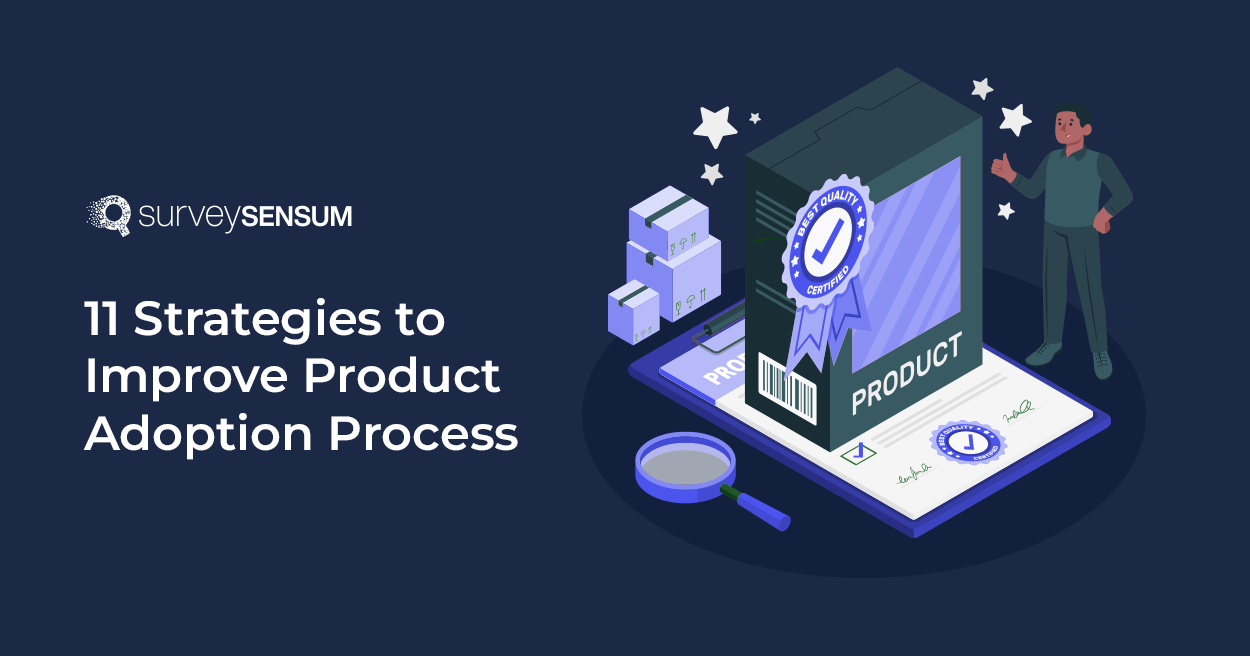
Have you ever poured your heart and soul into creating a product, only to find that it languishes in the market, struggling to gain traction? As a product manager, this can be a disheartening experience. You’ve likely encountered the pain points of low product adoption and felt the weight of challenges like customer churn and stagnant growth.
Imagine this scenario: Sarah, a dedicated product manager, launched a cutting-edge SaaS platform with an intuitive user interface and robust features. However, despite her team’s hard work, she noticed that the user adoption rate was disappointingly low. Customers were signing up but not sticking around, and her SaaS platform was inundated with user complaints. Sarah realized that the key to success lay in addressing these pain points head-on.
In the competitive world of SaaS, the battle for customer retention and product adoption can be fierce. But fear not, for there is hope!
The key to improving product adoption lies in understanding your users better than anyone else. Your SaaS customer feedback platform acts as a bridge, connecting you directly to the voices of your customers. It allows you to listen to their concerns, suggestions, and frustrations. It provides a platform for them to express their needs and desires.
In this blog, we’re going to unveil 11 proven strategies that product managers like Sarah can employ to turn the tide in their favor. These strategies not only tackle the challenges of SaaS platform overload and SaaS customer retention but also promise to enhance overall product adoption.
But before jumping into strategies let’s first understand what product adoption is.
11 Proven Strategies to Improve Product Adoption
Product adoption refers to the process a customer goes through when they first become aware of your SaaS product to when they finally find value in it.
It is a critical metric for companies as it directly impacts the success and sustainability of a product. High adoption rates indicate that users are finding value and that the product is effectively meeting their needs.
Now, that we know how important product adoption is, here are some strategies to improve product adoption.
Do you know that 88% of online users are less likely to return after a bad user experience?
This staggering number indicates the importance of creating an exceptional experience for your customers in the initial stages of their journey. If your customer’s initial interaction is positive then it can build a positive impression, establish trust, and set the stage for continued product adoption.
So, here’s how you can ensure that your first-time users have a positive experience:
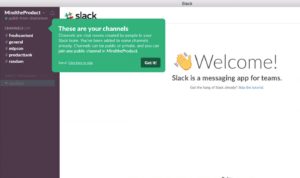
For example, when you create a new account on Slack, it guides you through its different features, highlighting the functionality of each of them.
By focusing on your user experience, especially for first-time users, businesses can create an unforgettable experience for their customers and capture their attention from the early stages.
In any business endeavor, one of the fundamental and crucial steps is understanding your customers. This knowledge enables you to identify their needs, preferences, and pain points, which in turn allows you to develop and offer products tailored to their specific requirements.
Here’s how you can do it effectively to improve product adoption.
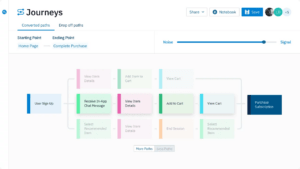
By implementing these strategies, you can develop a deep understanding of your users, align your product with their needs, and ensure that you meet or exceed their expectations – boosting your product adoption.
According to ThinkWithGoogle, 63% of smartphone users are more likely to purchase from companies whose websites or apps offer them relevant recommendations on products they may be interested in.
63% is a big number, right?
It highlights the importance of creating personalized experiences for your customers. This is particularly essential for improving product adoption because it acknowledges that not all users are the same and that their needs and preferences vary. This allows product owners and product managers to create a product that addresses the pain points of different customers.
Here’s how you can create personalized experiences:
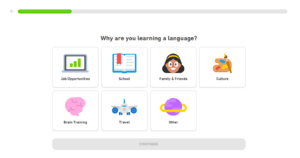
For example, while creating an account in Duolingo, users are asked to answer certain questions during the onboarding process. This allows Duoloingo to understand their customers’ goals and create a personalized onboarding experience for their customers.
By focusing on personalized experiences, you can enhance user engagement, satisfaction, and ultimately, product adoption. Users are more likely to stick with and fully adopt a product that caters to their unique needs and provides a seamless and tailored experience.
Do you know that friction during the onboarding process can result in as much as 75% of customers opting for another provider?
This staggering number highlights the importance of creating a seamless and engaging onboarding process for first-time users. Here’s how you can do that.
By implementing personalized, short, and value-focused onboarding processes that incorporate various learning resources you can enhance the user experience and improve product adoption.
Create a Value-Based Onboarding Process – Request a Demo
Let’s say you have a fitness app. You have now upgraded your user interface design and want your users to update the app to experience the new changes. How to notify them without disrupting their interaction with your app?
Here’s how:

For example, Google Chrome notifies its users of new updates subtly by flashing new update notifications in the upper right corner of the screen. Users just have to click on the notification and Chrome will be updated.However, be mindful of Chrome CPU usage, especially if you notice Google Chrome Helper eating CPU resources. Monitoring and optimizing your browser can help manage CPU usage for a smoother and more efficient browsing experience.

By focusing on these personalized strategies, you can cater to the unique needs and preferences of both decision-makers and product users, making it more likely that they will adopt your product effectively and find value in it.
Let’s say you have launched a new feature in your beauty app that enables users to filter beauty products by brands. But not many users are using it. It can be because the navigation is complex or the feature is hard to find. Now with thousands of users, how will you be able to find and fix the issue?
Here’s how you can do it:
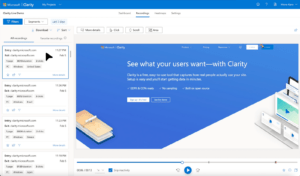
Incentivizing your users during the product adoption journey can be a crucial step in attracting and retaining customers. Here’s how you can do it:

For example, the Advantage program by American Airlines rewards frequent flyers with miles that can be redeemed for free flights, seat upgrades, and other travel-related benefits.
Measure the Effectiveness of Your Loyalty Program – Request a Demo
Customer support is the cornerstone of creating an exceptional customer experience for any business. It’s the most basic thing customers expect from any business they deal with.
This shows that selling products is not enough, you have to be there for your customers at every step of the way. This will ensure that your customers feel valued and heard and find value in your product.
So, here’s how you can ensure that your customer support is top-notch:
Remember that exceptional customer support can set your business apart from competitors and lead to long-term customer loyalty.
Setting up SaaS KPIs to measure and improve product adoption is crucial for assessing the success of your product and understanding how well it is being embraced by your target audience. Here are three important KPIs to track:
Remember that the choice of KPIs should align with your specific product goals and business objectives. Regularly track and analyze these metrics to make data-driven decisions, refine your product adoption strategies, and ultimately enhance the success of your product in the market.
It goes without saying that the SaaS product you create should aim at solving users’ pain points and hence become irreplaceable for them. Making your product irreplaceable is also required for sustainable growth and customer retention. Here are key strategies to achieve this:
By focusing on these strategies, you can make your SaaS product an indispensable part of your customers’ operations, increasing user retention, and building a loyal customer base.
Going one step beyond regular updates is an excellent approach to not only retain your SaaS customers but also turn them into enthusiastic advocates for your product. Here are some strategies to take your updates to the next level:
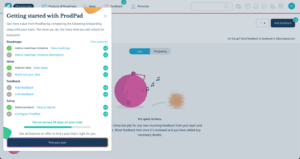
For example, ProdPad, a project management platform, provides first-time users with a checklist to set up an account on the platform. The checklist tells the user which tasks are done and what is left.
By adopting these strategies, you can go beyond regular updates and create a user experience that is not only valuable but also engaging and personally rewarding.
Creating and selling your SaaS product is not enough, your customers need to find value in your product that’s when your product becomes irreplaceable. This is why along with improving the UX and UI of SaaS products, businesses also need to focus on improving their product adoption.
With the 11 proven strategies provided in the blog, product managers can seamlessly improve their product adoption, retain customers, and boost their growth.
Now, to improve your product adoption, you also need to listen to the voice of your customers. This is where SurveySensum comes onto the field. It can help you create, send, track, and analyze thousands of feedback which will enable you to take action and resolve issues in real time.
The customer adoption process refers to the series of stages that a customer or user goes through when they start using a new product or service. It outlines the journey from the initial awareness of the product to becoming a regular and satisfied user.
Product Adoption Rate is a key metric used by companies to measure the percentage of their users or customers who have adopted and are actively using a specific product or feature within a given time period.
A product adoption strategy is a structured plan that a company or organization develops to encourage and facilitate the successful uptake and usage of its products or services by its target audience. The goal of a product adoption strategy is to ensure that users not only become aware of a product but also embrace it, use it effectively, and continue to derive value from it over time.
